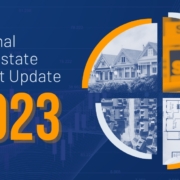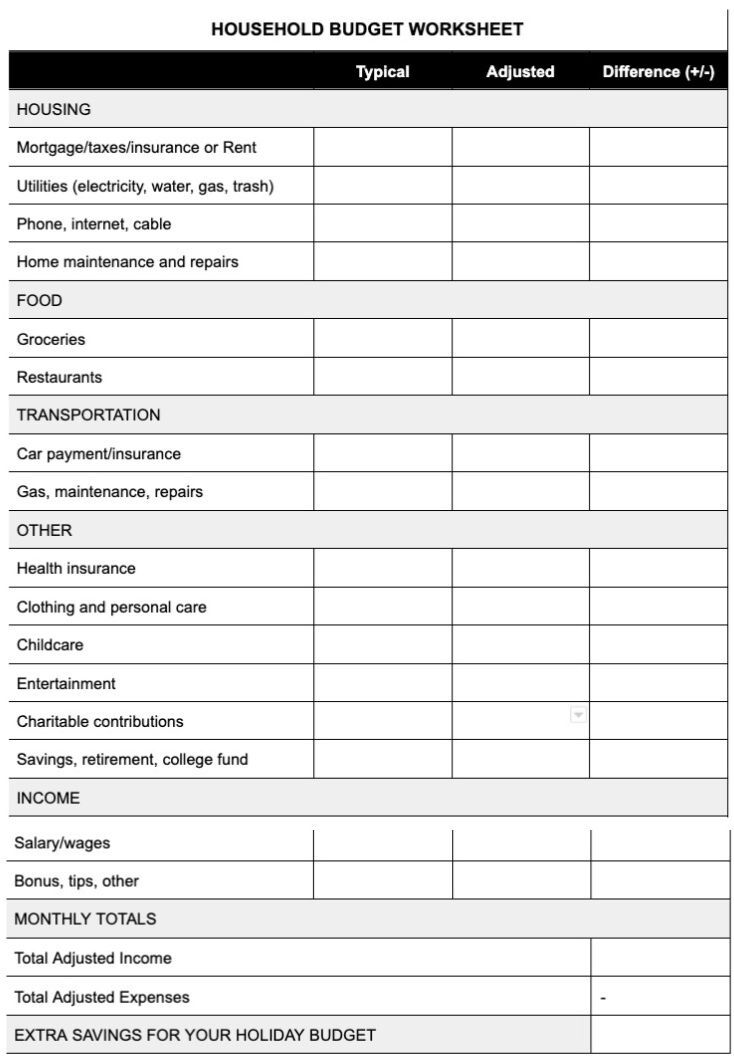To avoid buyer’s remorse, be sure to consider your future self when shopping for a home.
Most new homebuyers don’t regret becoming homeowners. In fact, according to a survey by LendingTree, 80% of recent buyers who successfully overcame a challenging housing market say they’re glad they found their current homes.1 But that doesn’t mean newly-minted homeowners don’t have any regrets about their buying choices.
On the contrary, research shows that even the most-satisfied homeowners would change some aspects of their home purchase if given the opportunity. According to a recent survey by Anytime Estimate, nearly 3 out of 4 buyers who purchased a home in 2021 or 2022 still have a few regrets.2
Some question their decision to move to a neighborhood they still don’t love. Others wish they had been less picky about where they lived so they could have paid less. Many are afraid they overspent or think they sacrificed too much in their rush to buy a home.
Here are some of the most common homebuyer regrets we see, along with our professional advice on how to avoid them.
REGRET #1: Spending More Than Necessary
No one wants to overpay for their new home purchase (and, luckily, with the right guidance, doing so is avoidable). But even if you’ve secured a winning purchase price, there are still plenty of ways to accidentally overspend.
One of the most common ways to overpay? Choose the wrong mortgage. In fact, in today’s higher-rate environment, this can be one of the riskiest mistakes a new buyer can make.
According to a recent survey, for example, nearly three-quarters of homebuyers leave money on the table by not bothering to shop around for the best rate.3 And research by LendingTree suggests that buyers in major metro areas lose an average of $63,151 over the life of their loan just by picking the first mortgage they’re offered.4
Lesson Learned: As long as you stick to what you can afford, buying a home can be a boon for your financial health. The longer you live in it, for example, the more your home is likely to appreciate in value and boost your long-term savings.
But to get the most value from your purchase, it’s worth your time to compare financing options and shop around for the best deal. We also recommend getting a mortgage pre-approval before you start your home search so you know what’s within reach. We can refer you to one of our trusted lending partners for help.
REGRET #2: Rushing Into a Home Purchase
In a competitive housing market, it’s often necessary to act fast to secure a home. But don’t let a need for speed tempt you into making an offer before you’ve thought through or fully vetted a new property.
Rushing into a home purchase isn’t just risky, it’s also one of the most commonly cited sources of homebuyer regret. According to Anytime Estimate, for example, more than 1 in 4 homebuyers felt remorse over how quickly they sped through the home buying process.2
Getting swept away by your emotions can also lead to buyer’s remorse. If you’ve found a home you love and are competing with other buyers, it can be tempting to overlook key details or bid more than you can afford. That’s one reason it helps to have a skilled professional by your side to calmly guide you through the process and ensure you act with reason, rather than emotion.
Lesson Learned: Buying a home is exciting. But if you don’t keep your emotions in check or act too impulsively, you could make poor choices in the moment that are hard to undo later.
To avoid making last-minute decisions that could backfire, know what you want, what you need, and what you can afford before you start your home search. We can help you set priorities so you’ll be able to move forward with confidence when the time is right.
REGRET #3: Miscalculating the Costs of Homeownership
Though real estate is a great long-term investment, it can be pricey in the short-term, often surprising homeowners who aren’t prepared for it. According to some estimates, for example, annual maintenance could cost as much as 1% or more of your home’s purchase price.5 Some buyers also forget to factor in additional ownership expenses, such as property taxes, insurance, and repairs.
Failing to think through the costs of homeownership is one of the most common sources of homebuyer regret. According to Anytime Estimate, for example, nearly half of the homebuyers who regret their purchase said they underestimated how much they would spend to live in it.2
However, some homes cost more to live in and maintain than others. So even if you’re certain that you can afford the average cost of homeownership, that doesn’t necessarily mean that every home in your price range will fit neatly into your budget. For example, very old homes with unique maintenance requirements could be extra pricey to keep up. Similarly, homes with high HOA or condo fees could also eat into your monthly budget.
Lesson Learned: A home should help you build your wealth, not drain it. So it’s important to factor in all the potential costs of living in a home—not just obvious ones like your mortgage payment and taxes. To ensure you don’t get overextended, add up your estimated maintenance and repair costs, as well as any miscellaneous expenses that are unique to a particular home.
We can help you with these estimates—and, if needed, present you with some less-costly alternatives.
REGRET #4: Underestimating the Time Required To Maintain or Renovate a Home
One of the most joyful aspects of homeownership is getting to relax in a home that’s all your own. But if a home is too high maintenance, then you may not have time to savor it.
Many homeowners love to spend their weekends puttering in their gardens or undertaking home improvement projects. But if that’s not you, then you may not like living in a home with a big yard or with high-maintenance features, like a pool.
According to a survey by Hippo, for example, 47% of homeowners who feel some regret about their home purchase complain that too much maintenance and upkeep is required.6
Similarly, buyers who purchase fixer-uppers are often surprised by how much time it takes to rehab their new homes. Although buying a fixer-upper is a great way to save on the purchase price, you could come to resent it if it eats up all your free time.
Lesson Learned: Renovation and maintenance projects are often time-consuming and stressful. So beware of committing to a property that requires too much of your attention if you don’t have the time or patience for it. With that said, home improvement projects can also bring a lot of joy and satisfaction to owners who like rolling up their sleeves.
We can talk through the realities of homeownership with you and help you choose a property that will fit your personality and schedule.
REGRET #5: Ignoring or Skipping a Home Inspection
It’s easy to get swept up in the excitement of buying a home. Sometimes, buyers will agree to skip a home inspection to sweeten their offer in a competitive market. They may also be tempted to pinch pennies since they’re already facing a large outlay. However, if you skip out on a home inspection, you could come to regret it.
When you hire a home inspector, you get a professional, in-depth examination of the property’s structures and systems before you buy it. It’s a worthwhile investment that can save you money in the long run, either by warning you away from a bad purchase or by providing a list of deficiencies you can use to negotiate with the sellers.
But even the most thorough home inspection isn’t going to be worth much if you don’t take the time to carefully consider it. If at all possible, make sure you’re on-site during the inspection so you can observe and ask questions. And don’t forget to re-evaluate any repairs that the seller agrees to make to ensure they’ve been properly completed prior to closing.
Lesson Learned: A home inspection can reduce your risk and save you money in the long run. But to maximize its effectiveness, you will need to be an active participant in the process.
We’d be happy to share a list of experienced and trustworthy home inspectors in our area. And when the inspection report is complete, we can help you decide if the purchase is worthwhile and negotiate any relevant seller concessions and repairs.
REGRET #6: Choosing a Home That Doesn’t Fit
Homeownership is often a better investment if you’re willing to stay put for at least five years.7 But if your newly purchased home isn’t a good fit, then you may not want to stick around that long.
Many homeowner complaints come down to simple lifestyle issues: Although a mismatch may seem small at first, the problems can magnify if you make so many compromises that they interfere with your quality of life.
Or, sometimes homebuyers can fall in love with a beautiful home and forget about practicalities. For example, a stunning kitchen can’t replace a needed bedroom or bathroom. And a sparkling pool may sit empty if the home requires a lengthy commute to your office.
Make sure you set some guardrails during your home purchase so you don’t over-compromise or accidentally prioritize your wants over your needs.
Lesson Learned: When you’re dealing with limited inventory or a fixed budget, it may be necessary to sacrifice some items on your home wish list. But if you fail to secure your must-haves, you could come to regret your home choice.
We can help you avoid an ill-fitting home purchase by working with you to set (and stick to) priorities and parameters before you begin your search.
REGRET #7: Purchasing Without Professional Help
Another path to homebuyer regret? Foregoing the expert guidance and market insight that you can only get from a licensed real estate agent.
Buying a home without professional representation can be extremely risky. Therefore, it’s no surprise that 86% of buyers enlist the help of an agent when purchasing a home. And the vast majority find their assistance to be invaluable: 89% say they would use their agent again or recommend them to others.8
Real estate is hyperlocal and extremely fluid—especially these days when the market is in constant flux. So it pays to have a knowledgeable expert by your side who can guide you through an often-complicated process.
We can help you avoid expensive mistakes that could lead to buyer’s remorse, all while making your home purchase as seamless and stress-free as possible. And since the home seller typically pays our commission, there’s no added expense for you!
Lesson Learned: When you work with a real estate agent, you benefit from a wealth of expertise and on-the-ground insight that you can’t get anywhere else. We’ll help you steer clear of the missteps that so many homebuyers make, so you can focus on enjoying your new home instead of questioning your choices down the road.
The best part? Since the majority of home sellers pay us a commission at closing, in most cases, we offer our invaluable guidance and assistance at no additional cost to you!
BOTTOMLINE
No one wants to look back on their home purchase and realize they made a big mistake. We can help you avoid the pitfalls so you can buy with confidence. To learn more about how we work to ensure our clients’ satisfaction, reach out today to schedule a free consultation.
The above references an opinion and is for informational purposes only. It is not intended to be financial, legal, or tax advice. Consult the appropriate professionals for advice regarding your individual needs.
Sources:
- LendingTree –
https://www.lendingtree.com/home/mortgage/homebuying-process-survey/ - Anytime Estimate –
https://anytimeestimate.com/research/american-home-buyers-2022/ - Zillow Home Loans –
https://zillow.mediaroom.com/2022-11-18-Prospective-home-buyers-spend-about-as-much-time-researching-new-TVs-as-they-do-mortgage-lenders - LendingTree –
https://www.lendingtree.com/home/mortgage/mortgage-shopping-study/ - CNBC –
https://www.cnbc.com/2022/05/01/survey-majority-of-homeowners-have-regrets.html - Hippo –
https://www.hippo.com/blog/2022-hippo-housepower-report-how-homeowners-are-responding-essential-maintenance-during - Realtor.com –
https://www.realtor.com/advice/sell/how-soon-can-you-sell-a-house-after-buying/ - National Association of Realtors –
https://www.nar.realtor/research-and-statistics/research-reports/highlights-from-the-profile-of-home-buyers-and-sellers#homebuyers












